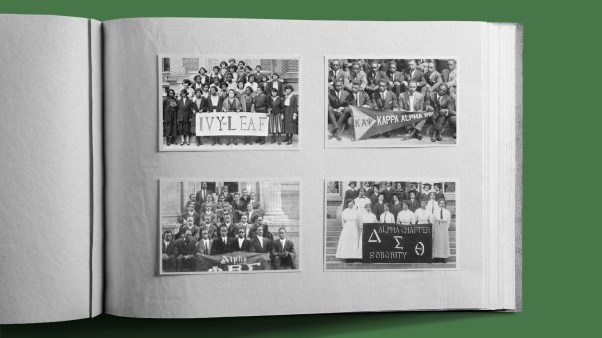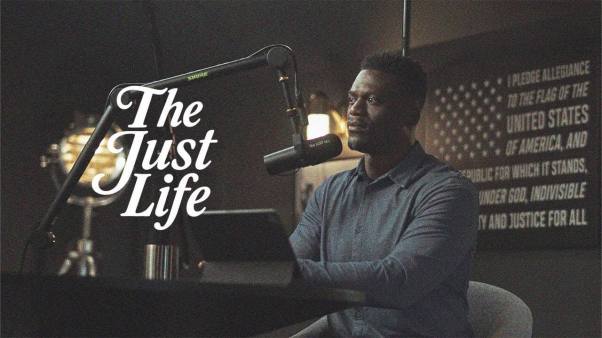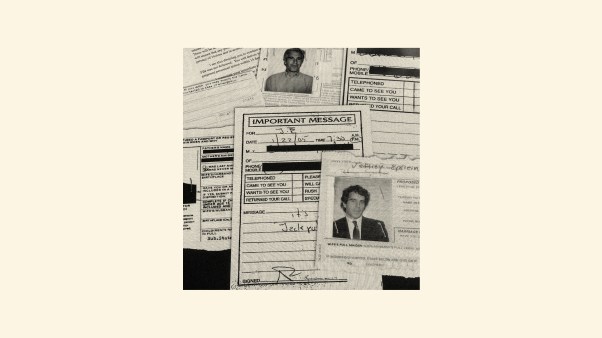I have a recurring argument with a friend who is a musician. In a songwriting class that he teaches, he tells students that songs should be less like sermons and more like prayers. As a preacher of sermons, I am always slightly offended, even if I understand what he means.
The lesson is “show, don’t tell.” When it comes to art, struggling with questions is more compelling than telling someone the answers. It is not for nothing that contemporary Christian music is often criticized for its rush to resolve things prematurely.
My rejoinder is that there are some truths that claim us, answers that offer stable ground on which to stand. Christian faith compels us to show and to tell, not least because the gospel of Jesus is a message to be proclaimed.
My friend usually grants my point. But he also reminds me that living the truth is a complicated project and that people who proclaim truth are often not as sure as they seem.
The tension between the sure answer of the gospel and the sometimes-questionable character of its proclamation returned to my mind as I read Evangelism: Learning from the Past by the late Michael Green (1930–2019), who wrote prolifically on the subject of sharing the Good News. Published posthumously from a draft manuscript, the volume is emblematic of Green’s lifelong passion.
Green’s legacy is evident from the first page: “My purpose in life has been to pass on, as best I can, good news. It is the best news anyone could ever hear: that there is a living God, who cares enough about us to become one of us, who dealt at great personal cost with the evil in the world, who is alive to make us into a renewed community, and who invites us to share his home after death.”
“The best news anyone could ever hear” has been entrusted to every follower of Jesus, and Green tells stories of evangelism throughout the history of the church. He notes early on that he is telling a selective story, focused on “the evangelical tradition and particularly its outworking in Britain.” Rather than creating a composite picture of evangelism from the many streams of church history, Green is particularly interested in highlighting historical precedents of the evangelistic model that has come to characterize the evangelical movement.
That is to say, Green is interested in evangelism that leads to conversion: an encounter with the person of Jesus Christ that reorients individual lives and, through them, the larger society. As he writes: “The criterion for authentic evangelism is not whether it increases the numbers in church, nor whether it makes a person more moral, but whether it impacts society for good.”
My fellow evangelical Protestants will resonate with many of these intuitions. But those looking for a more comprehensive account of the history of evangelism should look elsewhere. Green shows little interest in the medieval period and moves quickly from the church fathers to proto-Reformation movements, the Reformers, and 18th-century revivalists like George Whitefield and John Wesley, before finishing with the crusades of Billy Graham. Green’s story thus focuses on what we might call “evangelical evangelism,” and two themes emerge that reveal tensions in the larger movement Green sought to serve.
First, there is a tension between proclamation and embodiment. “For what we preach is not ourselves,” wrote Paul to the Corinthians, “but Jesus Christ as Lord” (2 Cor. 4:5). Jesus, Green notes, is “God’s good news in person … who proclaimed and embodied the kingdom of God.” In the early church, the person of Christ became the message, even as the church continued to testify to God’s kingdom in communities of radical discipleship. When telling the story of evangelism in the second through fourth centuries, Green notes how often Christian lives served as evidence of the gospel’s power. As the Greek philosopher Athenagoras put it, “They do not rehearse speeches, but exhibit good works.”
And yet, the struggle to contextualize the gospel amid new challenges leads to failures of cultural sensitivity. Green laments, for instance, how early evangelistic efforts “failed to make credible to the Jews that they were in fact the community of the Messiah.” As the story of the church continued, this pathology took tragic forms, as in the antisemitism of Martin Luther.
Green recounts a similar failure in the story of Celtic evangelism (drawing from George Hunter’s The Celtic Way of Evangelism). For a time, “The gospel was presented not as something entirely new, but as the fulfillment of all that was best in indigenous culture.” But imperial (Roman) Christianity “squashed the free-flowing initiative, imagination, and cultural sensitivity of the Celtic Christians.”
Green might have gone further and set failures of cultural capitulation alongside failures in contextualization. Whitefield’s evangelistic work is celebrated without reference to the slave labor at his orphanage. (The book’s publisher, Eerdmans, added a note that Green might have accounted for recent scholarship, including one of its own titles, Peter Y. Choi’s George Whitefield: Evangelist for God and Empire.) In a similar vein, Green might have said more about the compromise of racial segregation in Billy Graham’s early crusades before giving Graham credit for his later work in integration. The point is not to cancel the work of these evangelists, but rather to complicate the story and to humble us as we continually seek closer alignment with the gospel.
Of course, we can also complicate the story in positive directions, and Green does so. He notes how early monasteries were quite effective in evangelism, and how Calvin’s Geneva generated extraordinary evangelistic activity: “He and his colleagues sent no less than eighty-eight missionaries [to France alone]. … It is high time that this myth about Calvin’s disinterest in evangelism is laid to rest.”
This brings us to a second tension in the story of evangelical evangelism—between the work of lay evangelism and “superstar evangelists.” Green celebrates the “every member ministry” of the early church as the heart of its mission. At its core, he writes, “evangelism is not rocket science. It comes down to one person who knows Christ relating to one person who does not.”
And yet, the larger narrative sometimes reads like a collection of hero stories. This feature can make us devalue unsung work of unnamed Christians, as when Green sets the work of Whitefield and Wesley against a low estimation of 18th-century clergy in general.
Indeed, telling the story of great evangelists may make us think that the work of evangelism is mostly carried forward by charismatic individuals who are willing, in Green’s words, to “burn out for God”—and who almost always do. I worry about descriptions like this one of Evan Roberts, the notable name from the Welsh revival of the early 20th century: “God picked this man up, used him phenomenally for less than a year, and then laid him aside. Evangelists need to remember they are dispensable, and that is a painful lesson.” Does our Lord really treat his ministers so disposably?
There is undoubtedly a place for remembering the heroes of church history, as demonstrated by the “hall of faith” in Hebrews 11. But the “great cloud of witnesses” ultimately draws our gaze to Christ, faith’s “pioneer and perfecter” (Heb. 12:1–2). Our problem, as Katelyn Beaty’s recent book Celebrities for Jesus has shown, is that we often fail to lift our eyes high enough.
Any account of evangelism in the digital age must reckon with the media-fueled phenomenon of celebrity. Evangelicalism’s fervor in employing new media tools to share the message has gotten it entangled with celebrity from its earliest days.
Green draws this connection as he reflects on one of Billy Graham’s crusades, in which 52,253 recorded decisions for Christ only resulted in 3,802 people joining a local church. He asks, “Did concentration on big, exciting crusades tend to encourage churches to pay too much attention to the special event, to the detriment of year-long local evangelism? The jury is out on these questions.”
Over 3,000 new members for local churches is still something to celebrate. Yet the habit of seeking ever-larger audiences through new technologies always runs the risk of trivializing the message, fueling the culture of celebrity, and losing sight of the everyday work of evangelism.
Green, whose best-known books include Evangelism Through the Local Church, would undoubtedly agree. His other writings give a fuller picture of the larger project of evangelism. He wants us to look to the past, not to lionize those who have come before us but to learn from them. Indeed, this desire is evident on nearly every page. Each chapter ends by posing questions, not just about the historical figures in question, but also about the person reading the book. (“Am I content,” reads one example, “for God to do his own work in his own way, not mine?”) It reminds us that even as we examine the work of those who have gone before, we must examine ourselves as we continue that work.
The last time I talked with my musician friend about writing songs and sermons, he reminded me of a quote from Flannery O’Connor: “People without hope not only don’t write novels, but what is more to the point, they don’t read them. They don’t take long looks at anything, because they lack the courage.”
Hope is required to take a long look at anything, and that’s true about the history of evangelism. As we follow Green, we see things we have forgotten as well as things we might not want to remember. And yet, the same hope that helps us squarely face this history also pushes us to keep sharing—as imperfectly as ever—the best news anyone could ever hear.
Justin Ariel Bailey is associate professor of theology at Dordt University. He is the author of Interpreting Your World: Five Lenses for Engaging Theology and Culture.












